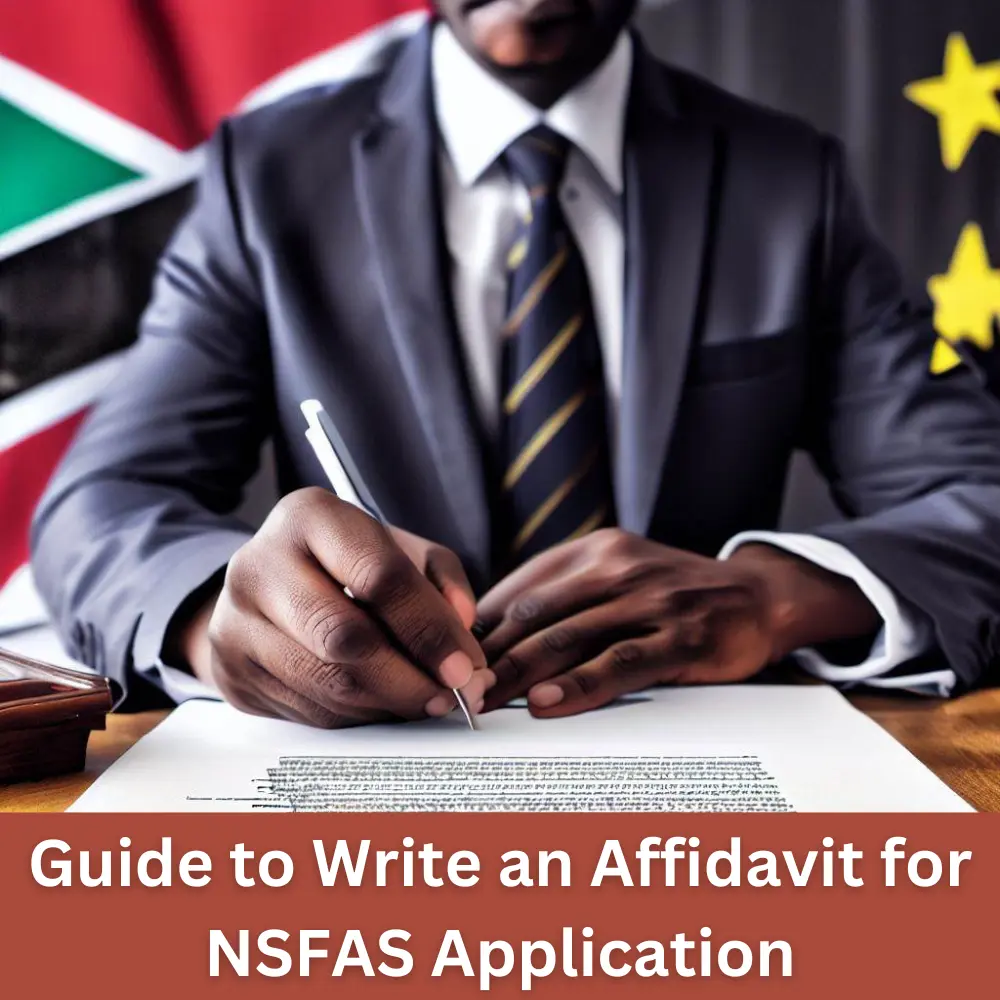Guide to Write an Affidavit for NSFAS Application
Affidavits are official declarations that confirm the truth and validity of particular data or figures. To qualify for financial assistance from the National Student Financial Aid Scheme (NSFAS), students are required to fill out an affidavit detailing their family’s financial status, which includes their earnings and expenditures.
The NSFAS is a great tool for individuals striving to meet their academic goals and gain entry to a prestigious college. Numerous applicants seek further details regarding the NSFAS affidavit and the necessary documents it entails. Continue reading this article to acquire comprehensive knowledge about the NSFAS affidavit.
What Does the NSFAS Affidavit Serve As?
Colleges of Technical and Vocational Education and Training (TVET) and state-funded universities in South Africa have the authority to seek out NSFAS financial assistance. Students from low-income backgrounds who cannot afford their schooling are the primary recipients of NSFAS support.

Drafting an Affidavit for NSFAS Grant Submission
Candidates must provide comprehensive information about their financial situation in order for the NSFAS to guarantee that financial aid is awarded to those who genuinely need it. This includes family income expenses and any additional funding sources that the applicant may have. Affidavits are crucial documents that verify the data that applicants provide. This legally binding document attests to the applicants’ sincerity and accuracy and offers proof of their financial situation. An NSFAS affidavit is assembled in the following manner.
Preparing an Affidavit for NSFAS
Completing the NSFAS affidavit can present difficulties. This manual will lead you through each phase and supply you with all necessary details. I employed this structure for my NSFAS affidavit. Please adhere to the directions provided below.
Step 1: Collect Information
I gathered all the data I would need for my affidavit. It contains details about the family earnings outlays and any additional funding sources. To substantiate their claims the applicant should send any pertinent paperwork such as pay stubs or bank account information.
Step 2: Draft the Intent Statement.
A declaration that the details given are as accurate as the applicant believes them to be should be added to the affidavit. This declaration should include a concise and detailed summary of all the information the applicant has gathered.
Step 3: Swear the affidavit
As you should I also submitted my completed affidavit to a commissioner of oaths. People with the permission to administer oaths, such as a notary public or an attorney, are capable of fulfilling this duty. The applicant must truthfully declare in the statement before the oath commissioner, facing potential legal repercussions for dishonesty. Following this, the oath commissioner will sign the statement and mark it with their stamp once the applicant has taken the oath.
Step 4: Getting the affidavit turned in to NSFAS
The candidate is required to turn in the application form and the affidavit. Take your time because you need to finish the affidavit in addition to the other necessary documents. Verify that you have attached all necessary supporting documentation with your application before submitting your affidavit.
If you are under 16 you can also turn in a copy of your birth certificate and ID from your parents or legal guardians. Please ensure that these are submitted with your application.
Affidavit for NSFAS SASSA and Non-SASSA Applicants
The fact that NSFAS requires specific supporting documents from SASSA applicants that are different from those needed from non-SASSA applicants is surprisingly little known. As I was completing my NSFAS affidavit I also came across it. This is what I know about NSFAS in regards to SASSA and non-SASSA applicants.
You must include a letter from SASSA with your NSFAS application if you, your spouse or any family members are the recipients of an SASSA grant. You will give your family proof of your parents, guardians or spouses income if they don’t receive any social grants like SASSA. Your form can be attached to the pay stub they received. If your spouse parents or guardians are not employed you must affix a copy of the UIF letter.
Additional Documents
Many applicants must also submit a few more documents in addition to the ones that were already mentioned. These are mentioned in the list below. In order to go home stress-free and prevent receiving notifications from the relevant department regarding missing documents make sure you include all required documents with your application.
- A signed affidavit from your parents, guardian, or spouse if they work in the private sector.
- Death certificate of the parent if any one of them is deceased.
- If your parents are divorced, then you need to provide them divorce decree.
- A signed affidavit if you are not living with your parents or someone else supports you.
- A copy of the court order for legal guardianship if a guardian is raising you.
- A bank statement if your parents/guardian are retired.
An affidavit is an important document that NSFAS requires to confirm applicants’ financial status. It is legally binding and enforces the applicants’ truthfulness and sincerity while presenting proof of their financial situation. By accurately describing their financial situation and adhering to the above-mentioned procedures, applicants can increase their chances of receiving financial aid from NSFAS.
The Wrap
Please feel free to take help from this article if you require assistance with the NSFAS affidavit process. We have made an effort to keep things straightforward and have thoroughly explained each step so that even people with no prior experience can follow along. With your NSFAS affidavit writing and submission I hope this guide will be helpful.